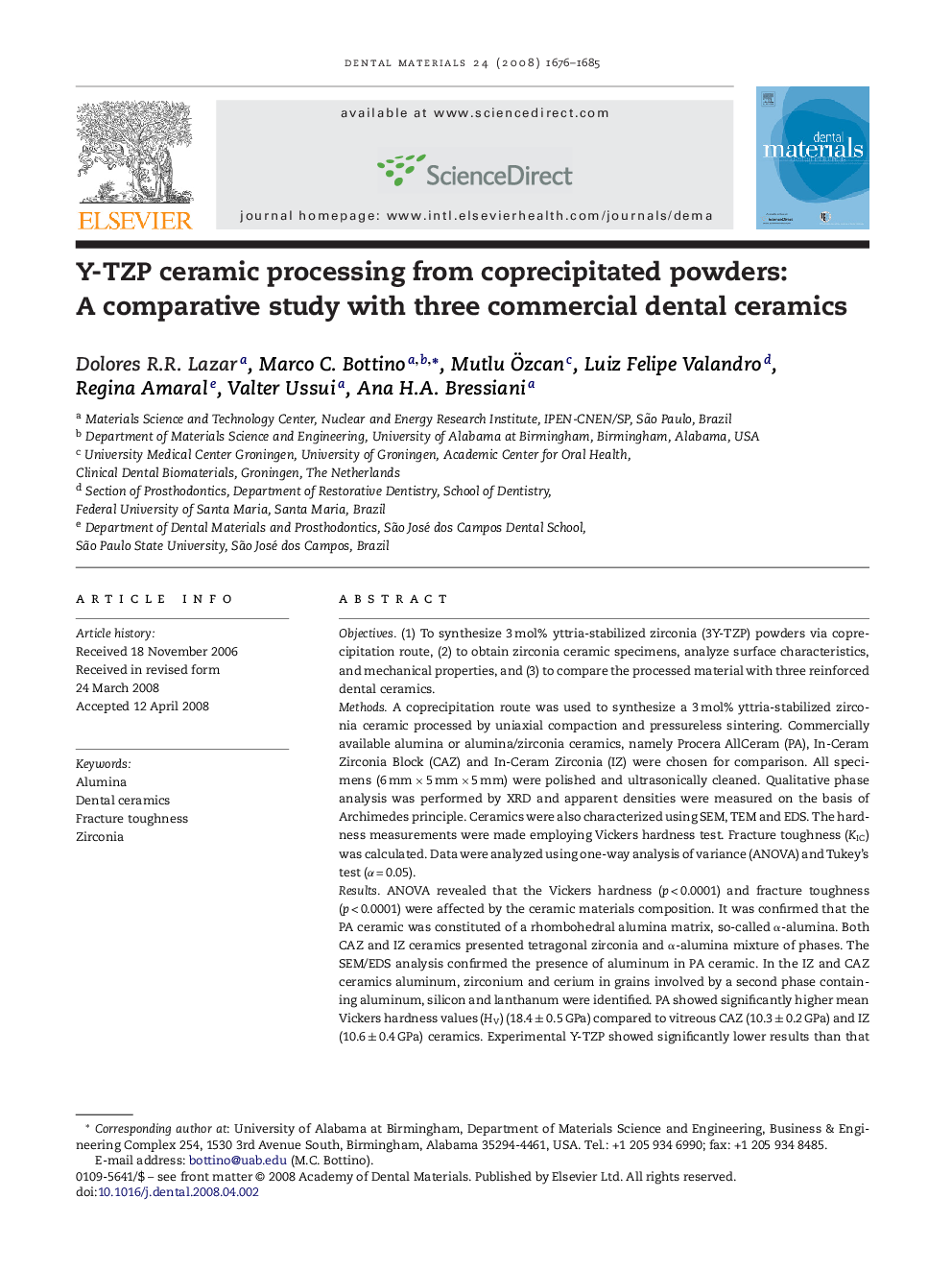| Article ID | Journal | Published Year | Pages | File Type |
|---|---|---|---|---|
| 1422918 | Dental Materials | 2008 | 10 Pages |
Objectives(1) To synthesize 3 mol% yttria-stabilized zirconia (3Y-TZP) powders via coprecipitation route, (2) to obtain zirconia ceramic specimens, analyze surface characteristics, and mechanical properties, and (3) to compare the processed material with three reinforced dental ceramics.MethodsA coprecipitation route was used to synthesize a 3 mol% yttria-stabilized zirconia ceramic processed by uniaxial compaction and pressureless sintering. Commercially available alumina or alumina/zirconia ceramics, namely Procera AllCeram (PA), In-Ceram Zirconia Block (CAZ) and In-Ceram Zirconia (IZ) were chosen for comparison. All specimens (6 mm × 5 mm × 5 mm) were polished and ultrasonically cleaned. Qualitative phase analysis was performed by XRD and apparent densities were measured on the basis of Archimedes principle. Ceramics were also characterized using SEM, TEM and EDS. The hardness measurements were made employing Vickers hardness test. Fracture toughness (KIC) was calculated. Data were analyzed using one-way analysis of variance (ANOVA) and Tukey's test (α = 0.05).ResultsANOVA revealed that the Vickers hardness (p < 0.0001) and fracture toughness (p < 0.0001) were affected by the ceramic materials composition. It was confirmed that the PA ceramic was constituted of a rhombohedral alumina matrix, so-called α-alumina. Both CAZ and IZ ceramics presented tetragonal zirconia and α-alumina mixture of phases. The SEM/EDS analysis confirmed the presence of aluminum in PA ceramic. In the IZ and CAZ ceramics aluminum, zirconium and cerium in grains involved by a second phase containing aluminum, silicon and lanthanum were identified. PA showed significantly higher mean Vickers hardness values (HV) (18.4 ± 0.5 GPa) compared to vitreous CAZ (10.3 ± 0.2 GPa) and IZ (10.6 ± 0.4 GPa) ceramics. Experimental Y-TZP showed significantly lower results than that of the other monophased ceramic (PA) (p < 0.05) but it showed significantly higher fracture toughness (6.0 ± 0.2 MPa m1/2) values when compared to the other tested ceramics (p < 0.05).SignificanceThe coprecipitation method used to synthesize zirconia powders and the adopted ceramic processing conditions led to ceramics with mechanical properties comparable to commercially available reinforced ceramic materials.
